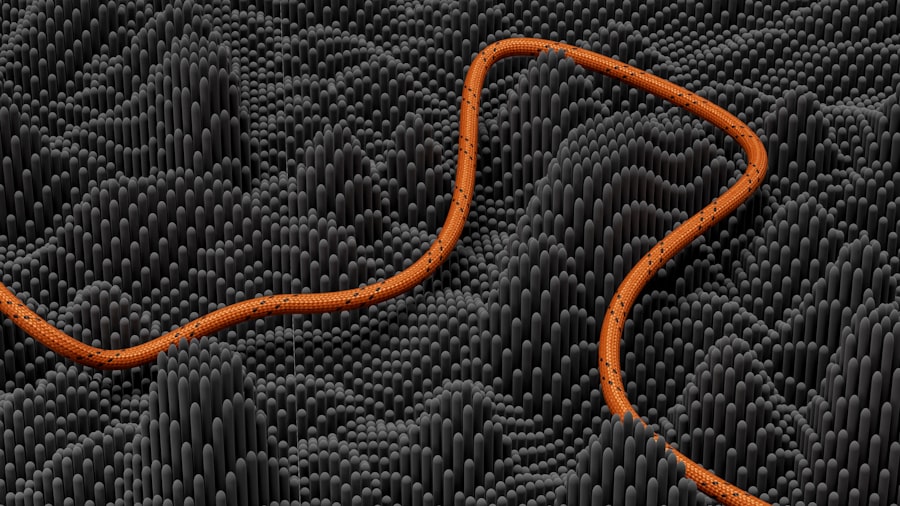The advent of smart textiles has revolutionized various sectors, with healthcare standing out as a particularly promising field. Smart textiles, often referred to as e-textiles or electronic textiles, integrate advanced technologies into traditional fabric materials, enabling them to perform functions beyond mere aesthetics. These textiles can sense, respond, and adapt to environmental stimuli, making them invaluable in healthcare applications.
The integration of sensors, actuators, and communication technologies into fabrics allows for real-time monitoring of patients’ health metrics, enhancing the quality of care and enabling proactive medical interventions. The potential of smart textiles in healthcare is vast, ranging from wearable devices that monitor vital signs to garments that deliver medication. As the global population ages and the prevalence of chronic diseases rises, the demand for innovative healthcare solutions continues to grow.
Smart textiles offer a unique approach to addressing these challenges by providing continuous health monitoring and facilitating patient engagement in their own care. This article delves into various applications of smart textiles in healthcare, exploring their roles in monitoring and diagnostics, drug delivery systems, wound care, rehabilitation, patient comfort, infection control, and the future landscape of this burgeoning field.
Key Takeaways
- Smart textiles in healthcare applications offer innovative solutions for monitoring, diagnostics, drug delivery, wound care, rehabilitation, patient comfort, safety, and infection control.
- Monitoring and diagnostics smart textiles enable continuous and non-invasive monitoring of vital signs and health parameters, providing real-time data for healthcare professionals.
- Drug delivery systems integrated into smart textiles offer personalized and controlled drug administration, improving patient compliance and treatment outcomes.
- Smart textiles for wound care and management provide advanced wound dressing materials with capabilities for monitoring and promoting healing.
- Rehabilitation and physical therapy smart textiles assist in movement tracking, posture correction, and muscle stimulation, enhancing the effectiveness of rehabilitation programs.
Monitoring and Diagnostics
One of the most significant applications of smart textiles in healthcare is their role in monitoring and diagnostics. These textiles can be embedded with sensors that track physiological parameters such as heart rate, respiratory rate, temperature, and even electrocardiogram (ECG) signals. For instance, researchers have developed smart shirts equipped with textile-based sensors that can continuously monitor a patient’s heart activity.
This capability allows for early detection of potential cardiac issues, enabling timely medical intervention. The data collected can be transmitted wirelessly to healthcare providers, facilitating remote monitoring and reducing the need for frequent hospital visits. Moreover, smart textiles can enhance diagnostics by providing a more comprehensive view of a patient’s health status.
For example, smart bandages equipped with biosensors can analyze wound exudate to detect infections or assess healing progress. By integrating diagnostic capabilities directly into clothing or wearable devices, healthcare professionals can obtain real-time insights into a patient’s condition without invasive procedures. This not only improves patient comfort but also streamlines the diagnostic process, allowing for quicker decision-making and treatment adjustments.
Drug Delivery Systems

Smart textiles are also making significant strides in drug delivery systems, offering innovative solutions for administering medications in a controlled and efficient manner. These textiles can be designed to release drugs at specific rates or in response to particular stimuli, such as changes in temperature or pH levels. For instance, researchers have developed smart bandages that can deliver antibiotics directly to a wound site when an infection is detected.
This targeted approach minimizes systemic side effects and enhances the effectiveness of the treatment. In addition to localized drug delivery, smart textiles can facilitate transdermal drug administration through micro-needles embedded within the fabric. This method allows for painless delivery of medications directly into the bloodstream without the need for traditional injections.
Such innovations are particularly beneficial for patients with chronic conditions requiring regular medication, as they improve adherence and reduce the burden of daily pill regimens. The integration of drug delivery systems into smart textiles represents a significant advancement in personalized medicine, allowing for tailored treatment plans that cater to individual patient needs.
Wound Care and Management
Wound care is another critical area where smart textiles are making a profound impact. Traditional wound dressings often require frequent changes and do not provide real-time information about the healing process.
For example, smart bandages equipped with sensors can alert healthcare providers when a dressing needs to be changed or when an infection is developing. These advanced wound care solutions not only enhance patient outcomes but also reduce healthcare costs associated with prolonged hospital stays and complications from untreated infections. Furthermore, some smart textiles are designed to promote healing through the incorporation of antimicrobial agents or growth factors within the fabric itself.
Rehabilitation and Physical Therapy
In the realm of rehabilitation and physical therapy, smart textiles are proving to be invaluable tools for both patients and therapists. Wearable devices integrated into clothing can track movement patterns and provide real-time feedback on performance during rehabilitation exercises. For instance, smart shirts equipped with motion sensors can analyze a patient’s posture and movement during physical therapy sessions, allowing therapists to make immediate adjustments to their treatment plans based on objective data.
Additionally, smart textiles can facilitate remote rehabilitation by enabling patients to perform exercises at home while still receiving guidance from their healthcare providers. This is particularly beneficial for individuals with mobility challenges or those living in remote areas where access to rehabilitation services may be limited. By combining technology with traditional therapeutic practices, smart textiles enhance patient engagement and motivation while ensuring that therapists have access to accurate data on their patients’ progress.
Patient Comfort and Safety

Patient comfort and safety are paramount in healthcare settings, and smart textiles are designed with these considerations in mind. Traditional medical garments often lack comfort and can contribute to patient anxiety during hospital stays or treatments. Smart textiles address these issues by incorporating soft, breathable materials that enhance comfort while also integrating functional features such as temperature regulation or moisture-wicking properties.
For example, smart pajamas equipped with temperature sensors can adjust their thermal properties based on the patient’s body temperature, ensuring optimal comfort throughout the night. Moreover, safety is enhanced through the use of smart textiles that can detect falls or sudden changes in a patient’s condition. For instance, garments embedded with accelerometers can monitor movement patterns and alert caregivers if a patient falls or experiences an abnormal event.
This proactive approach not only improves patient safety but also provides peace of mind for both patients and their families. By prioritizing comfort and safety through innovative textile design, healthcare providers can create a more supportive environment conducive to healing.
Infection Control
Infection control is a critical concern in healthcare settings, particularly in hospitals where patients are vulnerable to healthcare-associated infections (HAIs). Smart textiles offer promising solutions for enhancing infection control measures through the incorporation of antimicrobial properties directly into fabrics. These textiles can inhibit the growth of bacteria and other pathogens on surfaces that come into contact with patients, reducing the risk of infections.
For example, researchers have developed hospital gowns made from smart textiles that contain silver nanoparticles known for their antimicrobial properties. These gowns not only protect patients from potential infections but also contribute to overall hygiene within healthcare facilities. Additionally, smart textiles can be designed to change color or emit signals when they come into contact with harmful bacteria, providing visual cues for cleaning staff to take immediate action.
By integrating infection control measures into everyday garments used in healthcare settings, smart textiles play a crucial role in safeguarding patient health.
Future Developments and Challenges
As the field of smart textiles continues to evolve, several exciting developments are on the horizon that could further enhance their applications in healthcare. Advances in materials science are leading to the creation of more flexible and durable fabrics that can withstand repeated use while maintaining their functionality. Additionally, improvements in wireless communication technologies will enable seamless data transmission between smart textiles and healthcare systems, facilitating more efficient monitoring and diagnostics.
However, despite these advancements, several challenges remain in the widespread adoption of smart textiles in healthcare. Issues related to data privacy and security are paramount as sensitive health information is transmitted through these devices. Ensuring compliance with regulations such as HIPAA (Health Insurance Portability and Accountability Act) is essential to protect patient confidentiality.
Furthermore, there is a need for standardized protocols for integrating smart textiles into existing healthcare workflows to ensure consistency and reliability across different settings. In conclusion, while the future of smart textiles in healthcare is promising, addressing these challenges will be crucial for realizing their full potential. As research continues to advance and new technologies emerge, it is likely that we will see even more innovative applications of smart textiles that enhance patient care and improve health outcomes across various domains within the healthcare landscape.
A related article to How Smart Textiles Are Used in Healthcare Applications can be found in

